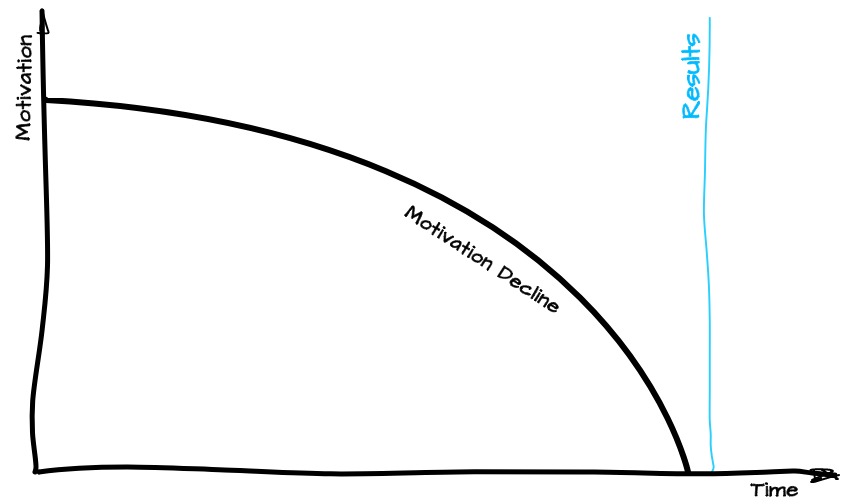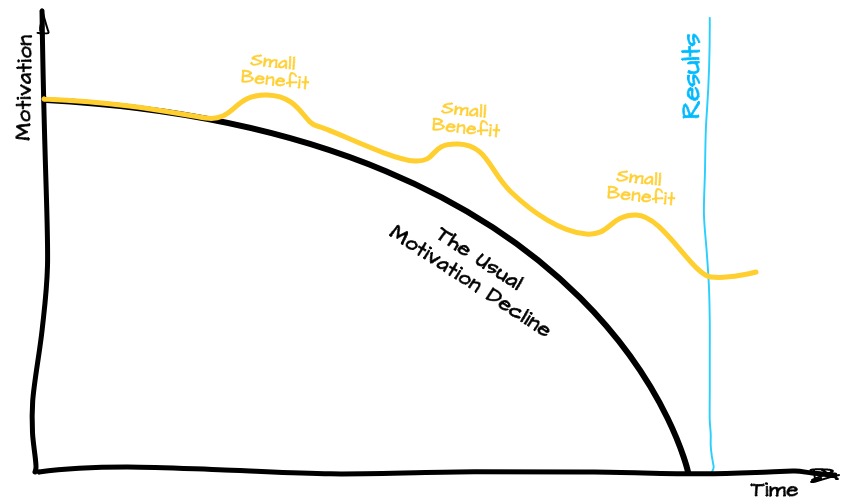If you’re even remotely interested in productivity, you’ve heard this advice a thousand times—start your workday with your first priority. And if you’ve tried to follow this advice, you know it does make you more productive.
It works for many reasons…
- We get fewer interruptions in the morning
- We have more willpower/discipline in the morning
- If we finish the hard task first, the following easier tasks feel like a reward
However, if you’ve tried to start with your MIT (most important task), you know it’s not that easy. Sure, you can do it for a day or two, or maybe even a week. But after a few weeks, you’re back in your old pattern. Doing busy work in the morning and what feels easy and quick, instead of what is important.
It’s not your fault though, that’s just how our brains are wired—to look for the path of least resistance.
In my experience, just saying to yourself, “I’ll do it” doesn’t work. At least not long-term. What does work is setting up a system that will force you to start your day with your MIT.
Let’s explore a few systems that will help you to do this long-term without having to discipline yourself and use willpower.
Set ONE Priority at The END of Your Workday
Two important points here: 1) set only ONE important task to work on in the morning and 2) set it on the day before
If you pick a task that is really important for you, it will probably be a difficult one. Even if it’s just one, it will probably be plenty to occupy your morning time.
If the task is just one, you don’t have the option to procrastinate with easier to do, less important tasks. You have just one thing to do in the morning and no excuses. No justifications.
If you set the MIT at the end of your workday for tomorrow, it helps you relax, let go of work, and enjoy your evening knowing that everything is taken care of until tomorrow. Then when you wake up, you don’t have to make any plans or schedules, just start with your MIT.
Again, it gives your brain no wiggle room for excuses and justifications.
Mark Your Mornings as “Busy” On Your Calendar
Make sure that your time is reserved and nobody can “book” you while you’re doing your MIT.
Even if you don’t use a calendar, you can tell everybody that typically interrupts you, that this is not a good time for you.
Also, this helps program your brain that the morning is reserved for productivity. No busy work, no socializing, no procrastination, no funny business. Just the MIT until it’s done.
Use an App to Get Rid of Distractions
Nowadays it’s easy to set up a few simple apps that will help you get rid of all distractions and keep you in check. I recommend two types of apps: internet/phone blockers, and social accountability.
Internet/Phone blockers
Unless there is something set in place to prevent you from getting distracted, you probably will. Don’t bother trying to use your willpower when it’s so much easier to set up an app. Here are the apps that I recommend:
- iPhone/Mac/Windows: freedom.to
- Android: focusme.com
In case you need an internet connection while you work, the apps let you block only specific websites and mobile apps that are distracting.
Social Accountability
It’s so much easier to postpone and procrastinate when you’re not accountable to anyone. Even if you have a boss or somebody to report to, typically that report is on a daily or a weekly basis. Usually, nobody holds us accountable to be there in the morning, start on time, and only work on the right thing.
And the problem is even worse if you work for yourself and you have nobody to report to. That’s why setting up social accountability with someone is crucial.
A great app that I found recently is focusmate.com.
The way it works is, you schedule a date and time on the app, and you get matched with a “productivity mate”. Your mate is a stranger that also wants to work in a focused way at that time. During the scheduled period, you both show up on camera, share for a minute or so what your most important task is, and start working.
Your camera is supposed to be on during the session, so if you suddenly disappear without notification and a good reason your mate can hold you accountable.
For me, that’s a great system that always works. I know that if I schedule a meeting with someone, I will be there. Every time, on time, just because I don’t want to stand someone up.
Note: to use the app you need to have an active camera and mic. (you can turn off the mic after the initial brief chat)
The Productive Morning Starts On the Night Before
One thing that can screw up all your plans is lack of sleep. If you don’t go to bed on time and get plenty of sleep on the night before, your morning will probably be wasted.
Even if you manage to get up on time and work on your task, your productivity while you’re sleep deprived will suck.
So if you set up an internet blocking app, a good idea is to include your evenings in the blocking period too. That way you don’t get distracted watching YouTube late at night or get a random phone call that lasts until 2 am.
Set Up Your Workstation for A Fast Start
One extra “ninja” trick you can use is when you’re done for the workday, take a minute to set up your workstation so it’s ready to go for tomorrow’s MIT session.
If you have a dedicated work computer that’s easy. Just open up the apps/websites/software that you need and close everything that is unrelated. Then put the computer to sleep (or hibernate), so that when you open it up on the next morning, there are no distractions and you’re ready to go.
If you don’t have a dedicated computer, it’s a good idea to create two user accounts—one for work, one for leisure. Then you can easily remove everything distracting from the work account and set it up for productivity for the morning.
Even if your MIT is not on a computer, you can still set up your workspace for a fast start. E.g. clean up your desk, get all the books and journals that you need and open them up on the right page.


